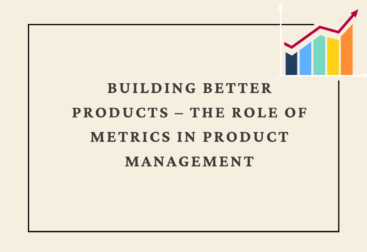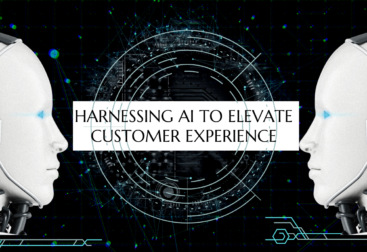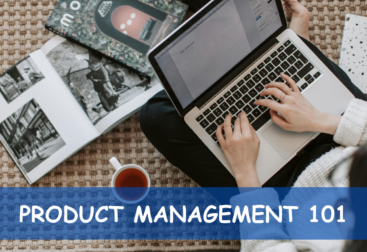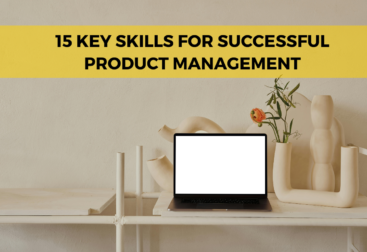The way businesses bring products and services to market has undergone a seismic shift in recent years. For decades, companies competed by promoting technical features, specifications, and price points. A bigger screen, faster processor, or cheaper subscription was enough to differentiate a product. But as we enter 2025, this product-centric approach is losing relevance. Customers today are less interested in what a product does and more focused on what it achieves for them.
This new reality is driving the rise of outcome-based go-to-market (GTM) strategies – a model where success is measured not by sales volume or technical superiority but by the tangible business outcomes delivered to customers. In this model, companies sell results, not just tools; value, not just features. Let us explore why outcome-based GTM is becoming the gold standard, the principles behind it, and how businesses can successfully adopt it in 2025 and beyond.
Why Outcome-Based GTM Matters in 2025?
The Maturity of Digital Transformation
Most industries have already adopted digital transformation initiatives. Companies now expect new tools and platforms to seamlessly integrate into their ecosystem and produce measurable results. Merely selling a “solution” without showing business impact is no longer enough.
Customer Expectations Have Changed
B2B and B2C buyers alike are more informed than ever. They do their research, compare offerings, and often demand proof of ROI before committing. Customers want assurance that investments will directly impact revenue growth, efficiency, or customer experience.
Commoditization of Features
Technology cycles are faster, and features are easily replicated. Competitors can catch up within months, making differentiation through specifications unsustainable. Value is now defined by execution and outcomes, not just innovation speed.
Risk-Sharing Becomes the Norm
Customers prefer shared accountability. They want vendors to have “skin in the game,” which means aligning pricing, delivery, and support models with customer success.
Data-Driven Proof Points
With advanced analytics, AI, and digital feedback loops, companies can track performance in real time. This makes outcome-based pricing models and success-based agreements more feasible than ever.
What Is an Outcome-Based GTM Strategy?
An outcome-based GTM is a commercial and operational model where:
- The core value proposition emphasizes business outcomes (e.g., reduced churn, faster product launches, lower operational costs).
- Sales and marketing messages focus on customer success stories and measurable impact, not specs or features.
- Pricing models are tied to performance, usage, or outcomes (e.g., pay-per-use, performance-based contracts).
- Support and services are designed to ensure ongoing value delivery rather than one-time sales.
In essence, outcome-based GTM is about shifting the conversation from:
- “Here are our product’s features” → to → “Here’s how your business will change with our solution.”
Key Principles of Outcome-Based GTM
-
Customer-Centric Value Proposition
Every communication must revolve around the customer’s goals: revenue growth, productivity, compliance, sustainability, or customer satisfaction. Companies must deeply understand these goals before pitching their offering. -
Shared Risk and Reward
Contracts and pricing should reflect mutual accountability. For example, instead of paying a flat fee, customers might pay based on cost savings delivered or new customers acquired. -
Continuous Value Realization
The customer journey does not end at purchase. Value delivery must be continuously reinforced through onboarding, adoption support, success metrics, and renewals. -
Integration Across Functions
GTM is not just a sales or marketing responsibility. Product, engineering, customer success, and operations must align around delivering outcomes. -
Data-Backed Proof
Every claim of value should be supported with data—benchmarks, case studies, dashboards, and real-time metrics that demonstrate business impact.
How Companies are Adopting Outcome-Based GTM in 2025?
1. Reframing the Sales Playbook
Sales teams are being retrained to act as consultants, not just sellers. The new focus is on understanding the client’s business, diagnosing pain points, and co-creating solutions that deliver measurable outcomes.
For example, instead of pitching a CRM by talking about automation features, a salesperson in 2025 says: “Our platform will reduce your lead response time by 50% and increase conversion rates by 20% within six months.”
2. Marketing Through Customer Impact Stories
Marketing content is shifting away from technical jargon to business narratives. Case studies, ROI calculators, video testimonials, and quantified success metrics dominate campaigns. The new “hero” is not the product—it’s the customer’s transformation.
3. Outcome-Aligned Pricing Models
Outcome-based pricing is gaining traction across industries:
- Pay-per-performance (e.g., pay only when cost savings are realized).
- Revenue-sharing models (vendor earns a percentage of the value created).
- Tiered success models (pricing tied to milestones achieved).
This not only de-risks customer investments but also builds trust and long-term partnerships.
4. Customer Success as a Core Function
Customer success teams are no longer reactive support desks. In 2025, they are strategic advisors responsible for ensuring adoption, driving measurable results, and expanding accounts through continuous value delivery.
5. Leveraging AI and Analytics
AI enables predictive insights into customer usage patterns, identifies risks before churn happens, and quantifies value delivery. Dashboards showing live ROI metrics are now standard in customer-facing portals.
Examples of Outcome-Based GTM in Action
SaaS Industry
- Traditional: Selling licenses per user.
- Outcome-based: Pricing tied to reduction in churn rate or increase in net promoter score (NPS).
Healthcare Technology
- Traditional: Selling hospital equipment with warranty.
- Outcome-based: Charging hospitals based on improved patient outcomes, reduced readmission rates, or faster diagnosis times.
Manufacturing & IoT
- Traditional: Selling predictive maintenance software.
- Outcome-based: Vendor charges based on reduction in machine downtime or cost savings from fewer breakdowns.
Education & Learning Platforms
- Traditional: Selling course subscriptions.
- Outcome-based: Charging based on graduation rates, certifications achieved, or job placements.
Benefits of Outcome-Based GTM
- For Customers: Lower upfront risk, higher trust, measurable ROI, alignment with business goals.
- For Vendors: Deeper customer relationships, differentiation in crowded markets, higher renewal rates, and long-term revenue streams.
- For Markets: Encourages innovation in value delivery, reduces wasteful spending, and drives ecosystem-wide efficiency.
Challenges in Implementing Outcome-Based GTM
While the benefits are compelling, companies face hurdles:
-
Defining the Right Outcomes
Success looks different for every customer. Standardizing outcome metrics without oversimplification is difficult. -
Measuring Impact Accurately
Proving causality between the vendor’s product and the customer’s success requires advanced analytics and trustworthy data sharing. -
Cultural Shifts
Sales teams used to transactional selling must embrace consultative approaches. Leadership must drive mindset change across departments. -
Risk Management
Tying revenue to outcomes exposes vendors to risks outside their control (e.g., customer execution gaps, market downturns). Proper contracts and safeguards are necessary. -
Operational Complexity
Delivering continuous value requires aligned teams, strong data infrastructure, and adaptive business models.
Steps to Building an Outcome-Based GTM in 2025
-
Understand Customer Journeys
Map the customer’s end-to-end workflow. Identify where your solution impacts critical outcomes and how value can be measured. -
Redefine Value Propositions
Rewrite messaging to focus on customer success metrics. Replace “features” with “business impact.” -
Develop Outcome Metrics & Dashboards
Build analytics to continuously measure and report outcomes. Co-design metrics with customers for credibility. -
Align Pricing to Value
Introduce flexible pricing tied to success metrics, while keeping a balance to protect vendor viability. -
Invest in Customer Success Teams
Empower them with tools, training, and authority to drive outcomes proactively. -
Educate and Upskill Sales & Marketing
Train teams to think like consultants, storytellers, and advisors. -
Pilot and Iterate
Start with outcome-based models for select customers, refine based on results, and scale gradually.
The Future of Outcome-Based GTM
As we move deeper into 2025, outcome-based GTM will no longer be a differentiator—it will be the expectation. Vendors who fail to adapt risk irrelevance in an environment where customers demand measurable impact. The winners will be those who:
- Build trust through transparent value delivery.
- Partner with customers for shared success.
- Harness AI and data to continuously demonstrate outcomes.
The age of selling specs and features is fading. The future belongs to businesses that can confidently say: “We don’t just sell products – we deliver results.”
Outcome-based GTM represents more than just a sales strategy. It is a fundamental reorientation of business around the principle that customer success equals vendor success. By focusing on outcomes instead of features, companies can foster trust, reduce churn, and create long-term partnerships.
In 2025 and beyond, the companies that thrive will be those that go beyond selling what their product is and embrace the art of selling what their product achieves.












